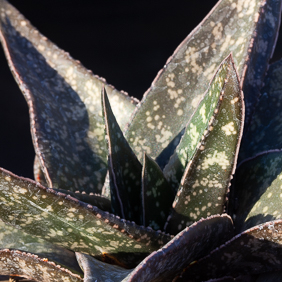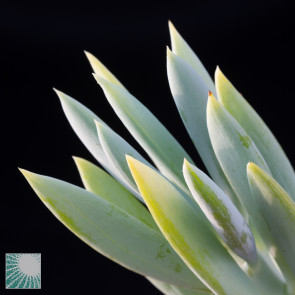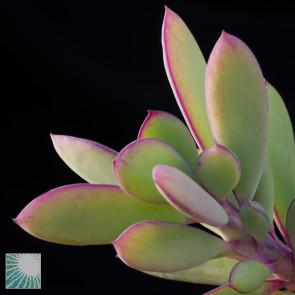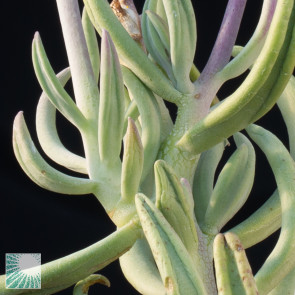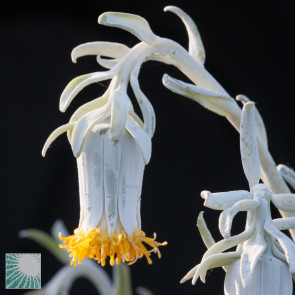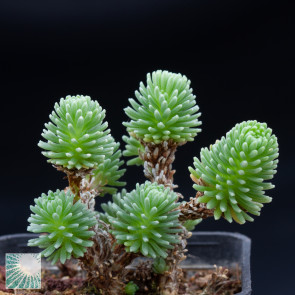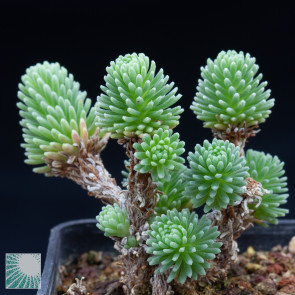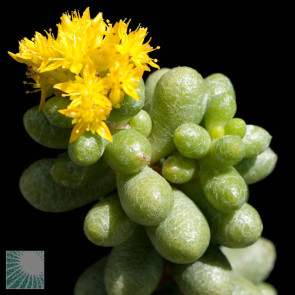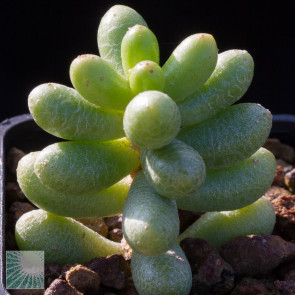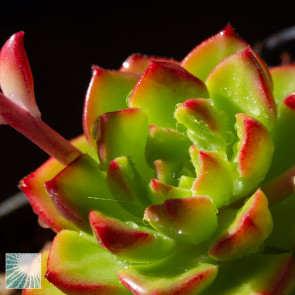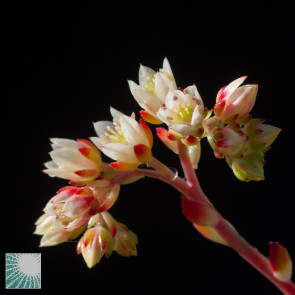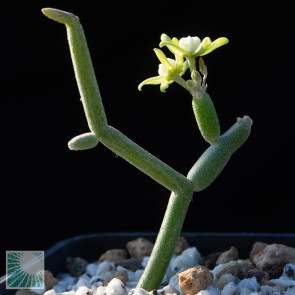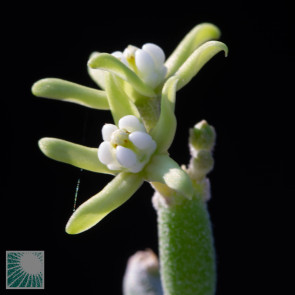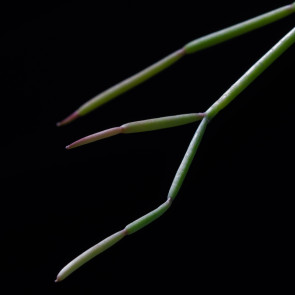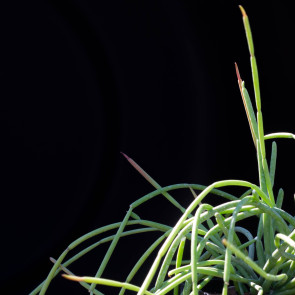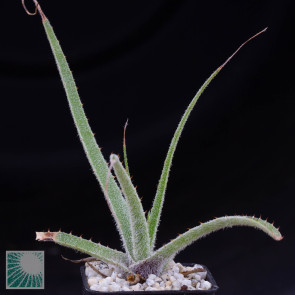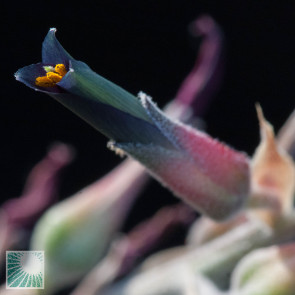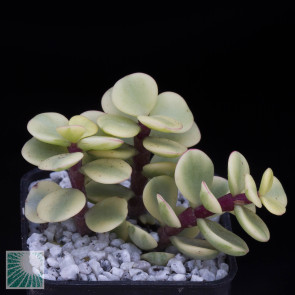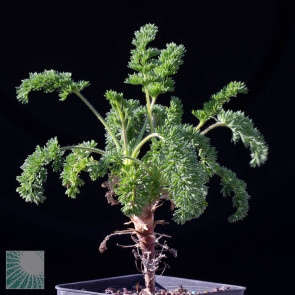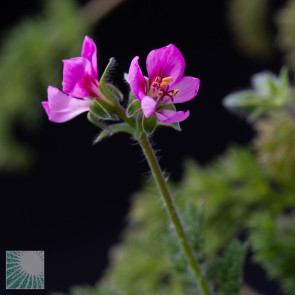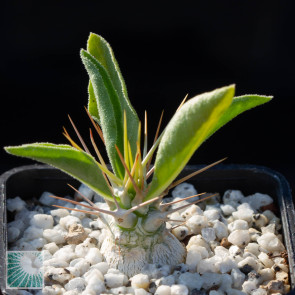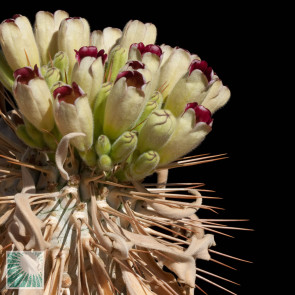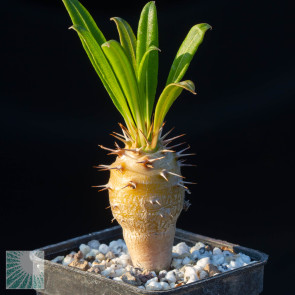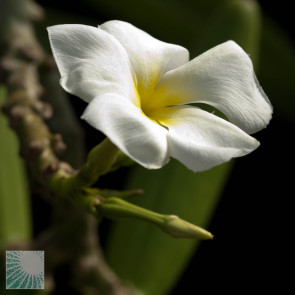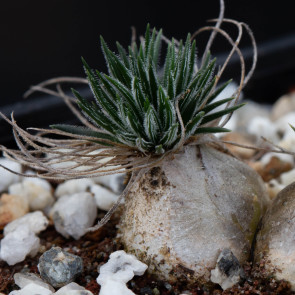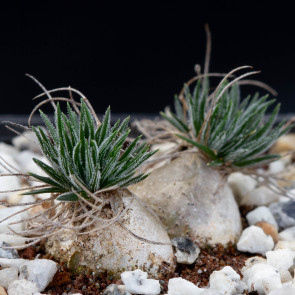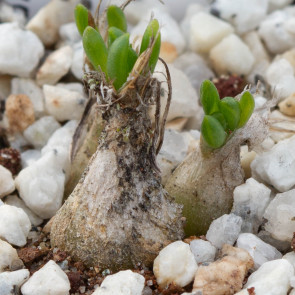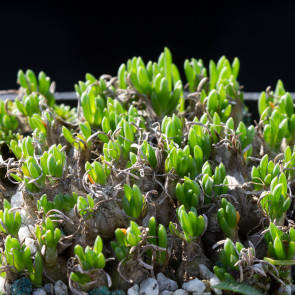You have no items in your shopping cart.
Other Succulents
-
Senecio ficoides cv. Mount Everest
Strong and fast growing plants. Interesting for the blue color of the leaves, covered with protective bloom. They grow rapidly forming creeping stems. If kept dry in winter they can resist up to -10 °C. Compared to the typical species, the "Mount Everest" cultivar is distinguished by the larger size of the stem and leaves. Learn More -
Senecio crassissimus
Beautiful species for the lenticular leaves with red border, arranged vertically which change their inclination to avoid the excessive incidence of the sun's rays. The stem is pink, which turns red in conditions of strong ambient light. Of Malagasy origin, it resists the cold well but does not tolerate frost. It grows in the coldest months of the year when it flowers with numerous sulfur yellow flower heads in richly branched corymbs. Learn More -
Senecio cephalophorus
Interesting for the stem enlarged at the base and for the beautiful inflorescences that appear in winter on long stems, which epidermis is covered with white bloom. The flowers are sulfur yellow. With the growth of the stem, the epidermis is adorned with beautiful cracks. Learn More -
Sedum multiceps
Interesting for the rosettes of small leaves gathered on the top of branched stems protected by the dried leaves of past seasons. Originally from Algeria but widespread in the Mediterranean area (it is naturalized in Sardinia). if well cultivated it keeps the rosettes compact and in some years it forms shrubs similar to yucca bonsai. Learn More -
Sedum hernandezii
It is a species of Mexican sedum that is easy to recognize due to the cracked epidermis of the stubby, emerald green leaves. It prefers bright, slightly shaded locations. In winter to be sheltered from frost. Learn More -
Sedeveria × cv. Letizia
Interesting intergeneric hybrid between Echeveria setosa var. ciliata and Sedum cuspidatum. Typical for the light green color of the leaves, which in cold weather take on a bright red color along the edges.
Branches quickly, forming conspicuous groups of rosettes. Learn More -
Sarcostemma socotranum
Small shrub succulent from Socotra Island. It forms bushes with leafless stems arranged in a zigzag pattern and produces small white fragrant flowers. Learn More -
Sarcostemma oresbium
Very delicate this plant which grows similar to Rhipsalis, but with more tender and bundled stems Learn More -
Puya laxa
In its genus it is one of the most attractive species, due to the delicate hairs that cover the epidermis making it resemble a kind of Tillandsia. The leaves are very rigid and fibrous, succulent and armed on the margins by small but dangerous hook spines. The very small flowers have a metallic cobalt blue color. It resists intense cold well and tolerates long periods of total drought. Learn More -
Portulacaria afra f. variegata
Exuberant and robust species, whose strong development must be contained avoiding the use of too organic substrates and frequent waterings. In this way it is possible to obtain splendid compact specimens, resistant to adversities and bright in colours. Learn More -
Pelargonium hirtum
Pelargonium species characterized by multifid leaves, with a soft consistency and generally folded downwards. While still young, these plants branch out profusely, forming small dense bushes from which dark pink flowers emerge. Winter growth. Protect from frost. Learn More -
Pachypodium namaquanum
South African species with short, stocky and very thorny, rarely branching stem. It likes winter temperatures of 2-5 °C. Growth is slow. Learn More -
Pachypodium lamerei f. fiherensis
Small form of Pachypodium lamerei with very swollen stem and short and sparse spines. It can bloom early as soon as it reaches one meter in height. Perhaps one of the most cold-hardy Malagasy pachypodium species (min. 2-5 ° C). Learn More -
Ornithogalum sardienii
Oudtshoorn, RSA.
South African dwarf bulbous that performs best if grown on very poor soil, essentially mineral, so as to develop a tuft of short and dense brush-like leaves. If kept on organic soil, it forms very long leaves, losing its charm. Learn More -
Ornithogalum lithopsoides
Oudtshoorn: Conglomerate hills,Vanwykskraal, RSA.
Dwarf species with epigeal bulbs of a few millimeters in diameter, always wrapped in the residues of old leaves. In autumn, the tiny leaves appear, typical for the translucent band that crosses them longitudinally. Learn More

